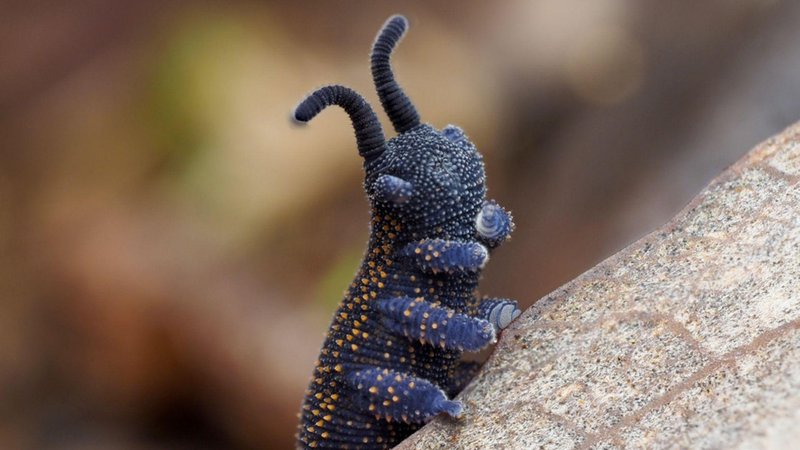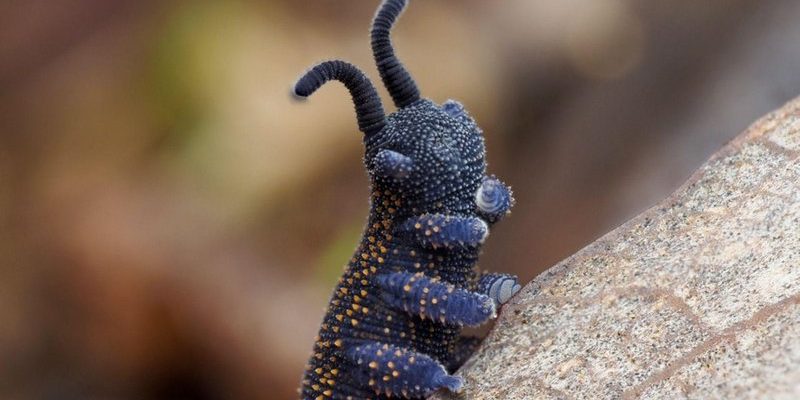
Velvet worms, or *onychophorans*, are more than just fun to look at. They serve as a living link in the evolutionary chain, showcasing traits shared between different species. They also help illustrate concepts like **natural selection** and **adaptation** in a vivid, memorable way. If you’re a teacher looking to spice up your lessons and give students a unique perspective on evolution, using velvet worms might just be the perfect addition.
What Are Velvet Worms?
Let’s start with the basics. Velvet worms are soft-bodied, segmented animals that live in moist environments, like forests and jungles. They have a unique appearance, covered in tiny hairs, making them look fuzzy. Typically, they can span around 5 to 15 centimeters long. The cool part? Velvet worms are neither insects nor true worms; they belong to their own phylum, *Onychophora*.
You might be wondering why these creatures matter. Well, they give us a glimpse into the distant past. Their ancestors roamed the Earth around 500 million years ago, sharing some traits with both arthropods (like insects and spiders) and annelids (like earthworms). By studying velvet worms, we can see how evolution shapes life on our planet over millions of years.
Why Teach Evolution with Velvet Worms?
Now, here’s the thing: teaching evolution can often feel abstract or distant for students. That’s where velvet worms come in. By using these little creatures as a focal point, teachers can make evolution feel alive and relevant. When students can observe and interact with real-life examples, concepts become easier to grasp.
For example, when discussing **adaptation**, teachers can highlight how velvet worms have evolved specific traits for survival, like their ability to produce sticky slime to catch prey. This tangible example brings the lesson home, showing students that adaptation isn’t just a dry textbook term but a real mechanism affecting living beings.
Moreover, velvet worms can also lead to discussions about biodiversity. You could have students compare them to other organisms, highlighting both similarities and differences. This opens the door to bigger conversations about ecosystems, environmental changes, and conservation.
How to Incorporate Velvet Worms into the Curriculum
If you’re ready to introduce velvet worms into your classroom, start with hands-on activities. Here are some ideas:
- Live Observations: Arrange a trip to a natural history museum or a science center where students can see velvet worms up close. If you’re feeling adventurous, you could even look into ordering some for your classroom!
- Dissection or Anatomy Lessons: Use preserved specimens to help students understand the anatomy of velvet worms, focusing on their unique features. This can tie into lessons on evolution and how different body structures serve various functions.
- Creative Projects: Encourage students to create presentations or posters about velvet worms, focusing on their evolution, habitat, and biological classification. This promotes research skills and creativity.
By integrating these activities, you not only foster engagement but also encourage critical thinking and analysis.
Understanding Velvet Worm Evolution
So, what’s the evolutionary journey of velvet worms look like? These fascinating creatures have a story that dates back hundreds of millions of years. They share common ancestry with both arthropods and annelids, making them a great example of the **evolutionary tree** connecting disparate life forms.
Through fossil records, scientists have been able to piece together the history of velvet worms. They were once more diverse and widespread than they are today. As environments changed, so did their populations. Teaching this timeline can help students understand how species adapt—or fail to adapt—over time.
Moreover, velvet worms exhibit some unique evolutionary traits. For instance, their ability to produce **slime** to capture prey and their unique mode of locomotion can be great discussion points. This can also lead to exploring other creatures with similar adaptations, further enriching the learning experience.
Addressing Common Misunderstandings About Evolution
When teaching evolution, you might face some common misconceptions or questions from students. For instance, some might believe that evolution is a straight line from simple to complex life forms. Using velvet worms, you can demonstrate that evolution is more like a branching tree, with many species coexisting and adapting in different ways.
It’s also essential to discuss the idea that evolution is not goal-oriented. Velvet worms survived and thrived not because they set out to become better, but because they adapted to their environments. This reality can help students develop a more accurate understanding of how evolution works.
By opening up these discussions, you’ll help your students think critically about evolution and its implications, encouraging them to question and explore this fascinating topic further.
Engaging Students with Fun Facts about Velvet Worms
Let’s spice things up with some fun facts about velvet worms! Sharing interesting trivia can break the ice and get students excited about learning. Here are some eye-catching facts to consider:
- Velvet worms have been around for over **500 million years**, making them living fossils.
- They can shoot a slime thread up to **30 centimeters** to catch their prey!
- Velvet worms can regrow lost limbs, showcasing their amazing ability to adapt.
These facts not only pique interest but can also serve as a springboard for deeper discussions about evolution, adaptation, and biodiversity.
Incorporating velvet worms into your teaching toolkit can bring the concept of evolution to life in a way that’s engaging and accessible. These quirky creatures offer a perfect entry point for students to explore living examples of adaptation and survival.
By utilizing hands-on activities, addressing common misconceptions, and sharing intriguing facts, you create an environment where students can thrive and get excited about science. So why not take that leap into the world of velvet worms and watch the curiosity bloom? With these fascinating little beings, evolution becomes more than just a chapter in a textbook; it’s a vibrant, living story waiting to be discovered.

